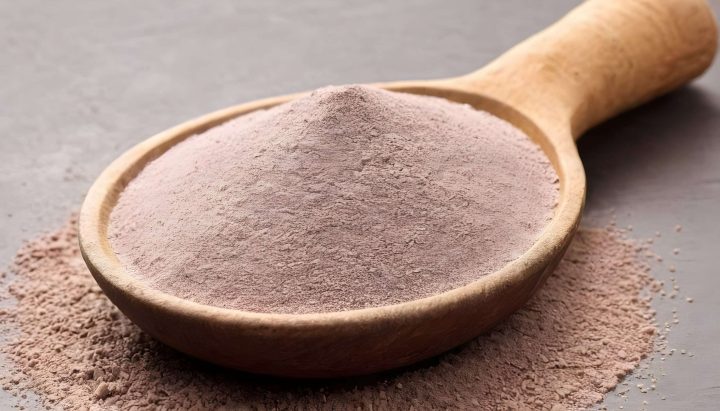Ragi flour, also known as finger millet, packs a powerful punch. This ancient grain has been a staple in Indian cuisine for centuries, offering a plethora of nutrients like calcium, iron, and dietary fiber. From boosting energy levels to aiding digestion and managing blood sugar levels, ragi flour is a versatile ingredient with numerous advantages.
Whether you’re looking to enhance your overall well-being or seeking gluten-free alternatives, incorporating ragi flour into your diet can be a game-changer. Let’s delve into the rich history and explore the myriad benefits that this superfood has to offer.
Ragi Flour Basics
Nutritional Profile
Ragi flour is packed with essential nutrients like calcium, iron, and fiber. It offers a good amount of protein while being low in fat. This flour is a rich source of B vitamins, particularly niacin.
Ragi flour stands out for its impressive content of key minerals and vitamins. For instance, the high calcium levels in ragi contribute to bone health and muscle function. Iron aids in oxygen transport within the body and helps prevent anemia.
Origin and Types
Originating from Africa, ragi is also known as finger millet. In Indian cuisine, various types of ragi varieties are commonly used – red, white, and brown. Each type has its unique characteristics that cater to different culinary needs.
The diversity in ragi types allows for versatility in cooking applications; for example: red ragi can be used to make traditional Indian flatbreads called rotis due to its distinct flavor profile compared to white or brown varieties. These variations offer consumers options based on personal preference or dietary requirements.
Processing Methods
Ragi flour can undergo different processing methods such as grinding the whole grain or removing the outer husk before grinding. The method chosen impacts both texture and nutrient composition significantly. Stone grinding is a traditional technique frequently employed during the processing of ragi flour that preserves more nutrients compared to modern milling processes which might lead to some loss during refinement.
Nutritional Facts of Ragi Flour
Macronutrients
Ragi flour, a complex carbohydrate, offers sustained energy and has a lower glycemic index than refined grains. Its carbohydrates are slowly digested, aiding in blood sugar level regulation. ragi flour is a valuable plant-based protein source containing essential amino acids such as methionine and lysine. These proteins support tissue repair and growth.
Ragi flour is low in fat content mainly consisting of unsaturated fats without any cholesterol. The fat present contributes to the flour’s satiety value. In terms of vitamins, ragi flour boasts thiamine (B1), riboflavin (B2), folic acid (B9), vitamin E acting as an antioxidant agent alongside vitamins A and K.
Minerals
High calcium levels in ragi flour promote bone health while its iron content aids red blood cell production. Furthermore, this nutritious flour contains magnesium for muscle function support along with phosphorus and potassium for overall well-being.
Health Benefits of Ragi Flour
Digestive Health
Ragi flour is rich in fiber, which supports a healthy digestive system. This fiber content aids in preventing constipation and ensuring regular bowel movements. For individuals dealing with digestive issues like irritable bowel syndrome (IBS), incorporating ragi flour into their diet can be beneficial. The fiber helps regulate digestion, keeping the gut healthy and functioning properly.
-
Promotes healthy digestion
-
Prevents constipation
-
Beneficial for individuals with IBS
Blood Sugar Control
The low glycemic index of ragi flour plays a crucial role in managing blood sugar levels effectively. By slowing down the absorption of glucose into the bloodstream, it helps in regulating blood sugar spikes. This quality makes ragi flour suitable for individuals with diabetes or those looking to reduce their risk of developing the condition by maintaining stable blood sugar levels through their diet.
-
Regulates blood sugar levels
-
Slows glucose absorption
-
Suitable for diabetes management
Heart Health
Incorporating ragi flour into your diet can contribute to overall heart health as it is low in saturated fat and cholesterol. The presence of antioxidants in ragi flour helps combat oxidative stress and inflammation that are harmful to cardiovascular health. Regular consumption of ragi flour may help lower the risk of developing cardiovascular diseases by promoting heart health through its nutrient composition.
-
Low in saturated fat and cholesterol
-
Reduces oxidative stress
-
Promotes cardiovascular health
Weight Management
For those focusing on weight management, including ragi flour can be beneficial due to its nutrient density. The high fiber content promotes feelings of fullness, reducing calorie intake naturally without compromising on nutrition. Moreover, the protein content present in ragi flour assists in maintaining muscle mass during weight loss efforts.
-
Nutrient-dense food aiding weight management
-
High fiber content reduces calorie intake
-
Protein maintains muscle mass
Ragi for Special Diets
Gluten-Free Benefits
Ragi flour is a versatile ingredient that caters to individuals with gluten intolerance or celiac disease. It serves as an excellent substitute for wheat flour in various recipes, offering a nutrient-rich alternative. Incorporating ragi flour into a gluten-free diet provides essential nutrients while eliminating the risks associated with gluten consumption. This makes it an ideal choice for those looking to maintain a gluten-free lifestyle without compromising on nutrition.
-
Pros:
-
Suitable for individuals with gluten intolerance
-
Nutritious alternative to wheat flour
-
-
Cons:
-
May have a slightly different taste and texture compared to traditional wheat products
-
Vegan Nutrition
For vegans and vegetarians, ragi flour emerges as a valuable source of essential nutrients like protein, iron, and calcium without relying on animal-derived products. By integrating ragi flour into their diets, individuals can ensure they meet their nutritional requirements while adhering to plant-based eating habits. This plant-based option not only enhances the diversity of meals but also contributes significantly to overall health and well-being.
-
Key Information:
-
Plant-based source of protein, iron, and calcium
-
Enhances nutritional profile in vegan diets
-
Low Glycemic Index
The low glycemic index of ragi flour plays a crucial role in managing blood sugar levels effectively. Consuming foods made from ragi helps prevent sudden spikes in blood glucose after meals by promoting gradual sugar release into the bloodstream. This steady energy supply throughout the day aids in maintaining balanced energy levels and avoiding fluctuations that can impact overall health negatively.
-
Incorporate ragi flour into your diet gradually.
-
Experiment with different recipes using ragi to find what suits your taste preferences best.
-
Consult with a healthcare provider or nutritionist if you have specific dietary concerns related to incorporating ragi into your meals.
Incorporating Ragi into Meals
Breakfast Ideas
Ragi flour is versatile and can be used in various breakfast options. Ragi porridge is a popular choice, offering a warm and nutritious start to the day. Mixing ragi flour with water or milk, adding jaggery, and flavoring it with cardamom powder creates a delicious porridge rich in essential nutrients.
Another breakfast idea is making ragi dosa, which involves fermenting ragi flour along with other ingredients like rice or lentils to create a crispy pancake-like dish. For added nutrition and taste, consider incorporating chopped fruits like bananas or nuts such as almonds into the dosa batter before cooking.
Enhance your mornings by preparing ragi flour pancakes. These pancakes are not only tasty but also packed with health benefits. You can experiment by including different toppings such as fresh berries, yogurt, or honey for extra flavor variations.
-
Nutritious breakfast options
-
Ragi porridge with jaggery and cardamom powder
-
Fruits and nuts in ragi-based recipes enhance flavor
-
Delicious ragi flour pancakes for a healthy choice
Snacks and Beverages
Ragi flour offers an array of possibilities. Use it to bake wholesome treats like ragi cookies or energy bars that provide sustained energy throughout the day. These snacks are perfect for those looking for quick yet nutritious bites.
In traditional Indian cuisine, ragi plays a significant role in snacks like murukku or sevai dishes that are well-loved for their crunchy texture and unique flavors. By incorporating urad dal along with ragi flour when making these snacks, you can elevate their taste profile while benefiting from the nutritional value of both ingredients.
For refreshing beverages, try preparing ragi malt or blending up some creamy ragi-based smoothies using ingredients like fruits, yogurt, or milk. These drinks not only quench thirst but also offer essential nutrients vital for maintaining good health.
-
Wholesome snack options
-
Traditional Indian snacks using murukku
-
Refreshing beverages like ragi malt
Side Effects of Ragi Flour
Allergies and Intolerance
Ragi flour is a gluten-free alternative, which makes it a great choice for individuals with wheat allergies or gluten intolerance. Despite this benefit, some people might have specific allergies or sensitivities to ragi itself. If you experience any adverse reactions after consuming ragi flour, such as digestive issues or skin rashes, it’s crucial to seek advice from a healthcare professional. They can help determine if your symptoms are related to an allergy or intolerance to ragi.
When incorporating ragi into meals as discussed earlier, individuals need to be cautious about potential allergic reactions that may arise due to personal sensitivities. While many people enjoy the nutritional benefits of ragi flour without any problems, being aware of possible allergies is essential for overall well-being.
Anti-Nutritional Factors
In addition to its numerous health benefits, it’s important to note that ragi flour contains anti-nutritional factors like phytic acid and tannins. These compounds can hinder the absorption of essential minerals in the body if consumed in large quantities regularly. However, there are ways to mitigate these effects through proper processing techniques such as soaking or fermentation before using ragi flour in recipes.
To minimize the impact of anti-nutritional factors present in ragi flour during cooking and meal preparation processes mentioned earlier; various methods like soaking the grains overnight before grinding them into flour can be beneficial. By adopting these practices when using ragi flour in dishes like rotis or porridge, individuals can enhance its nutritional value while reducing potential negative effects caused by anti-nutritional compounds.
Comparing Ragi with Other Grains
Nutritional Comparison
Ragi flour stands out for its nutritional value when compared to other grains. It contains more calcium than rice or wheat flour, essential for strong bones and teeth. Ragi boasts higher levels of fiber, aiding digestion and promoting a healthy gut.
Ragi flour surpasses many cereals, making it an excellent choice to prevent anemia. By incorporating ragi into your diet, you can ensure you’re getting these vital nutrients in ample amounts.
-
Higher calcium content than rice or wheat
-
More fiber compared to refined grains
-
Good source of iron for preventing anemia
Health Impact
Regular consumption of ragi flour can have profound effects on your overall well-being. Its nutrient-rich profile supports various bodily functions and helps stave off nutritional deficiencies that may arise from a lackluster diet. Including ragi in your meals ensures you are nourishing your body adequately.
By adding this millet into a balanced diet plan, you are taking a step towards better health outcomes and improved vitality. The positive impact of including ragi flour in your daily intake cannot be overstated.
-
Supports overall health and well-being
-
Prevents nutritional deficiencies
-
Positive effects on overall health
Culinary Uses
In the culinary realm, ragi flour shines as a versatile ingredient that can elevate various dishes through its unique flavor profile and texture. From baking wholesome bread to crafting delectable cookies or pancakes, the possibilities with ragi are endless.
Whether sweet or savory recipes are on the menu, incorporating this finger millet into your cooking ventures adds depth and nutrition to every bite. Its adaptability makes it easy to infuse into different cuisines while reaping its numerous health benefits simultaneously.
-
Ragi enhances flavor profiles in baked goods.
-
Adds texture variation in dishes like cookies.
-
Versatile ingredient suitable for both sweet and savory recipes.
Consumer Tips
Buying Guide
When purchasing ragi flour, opt for well-known brands known for their high-quality products. Ensure to examine the packaging to learn about the processing method and any additional components present. For a more sustainable choice, consider selecting organic or locally sourced ragi flour.
To maintain the freshness of ragi flour, store it in an airtight container placed in a cool, dry location. Prevent exposure to moisture and direct sunlight as these factors can impact the quality of the flour significantly. Always check the expiration date on the packaging and consume within its recommended timeframe.
-
Look for reputable brands
-
Check processing information on packaging
-
Consider organic or locally sourced options
Storage Tips
Keep your ragi flour fresh by storing it properly in an airtight container away from moisture and sunlight. Make sure you use it before its expiration date mentioned on the package to enjoy its full nutritional benefits.
For cooking techniques with ragi flour, mix it with water or other liquids to create batter or dough consistency suitable for various dishes like dosa, rotis, porridge, etc. Depending on your preference, you can steam, roast, bake ragi-based dishes to explore different flavors and textures.
-
Store in an airtight container.
-
Avoid exposure to moisture and sunlight.
-
Use before expiration date for maximum benefits.
Future of Ragi Flour
Research Trends
Ongoing research on ragi flour focuses on its potential health benefits. Studies are exploring its effects on diabetes, obesity, and cardiovascular diseases. Researchers investigate the bioactive compounds in ragi for their therapeutic properties. For instance, a study published in the Journal of Food Science found that ragi flour contains antioxidants that can help reduce inflammation.
Research also aims to uncover how consuming ragi flour may aid in managing blood sugar levels due to its high fiber content. This aligns with consumer tips promoting the inclusion of wholesome flours like ragi in a balanced diet for better overall health.
Sustainability Aspects
Ragi stands out as a sustainable crop due to being drought-tolerant and requiring minimal water compared to other grains like wheat or rice. Its cultivation contributes significantly to soil conservation by preventing erosion and enhancing soil quality over time. Supporting sustainable agriculture practices by using ragi flour not only benefits individual health but also has positive environmental impacts.
Promoting the consumption of ragi flour is not just about personal well-being but also about contributing to larger sustainability goals through conscious food choices. By choosing products made from wholesome flours like ragi, consumers actively support environmentally friendly farming practices while reaping the nutritional benefits associated with these ancient grains.
Closing Thoughts
You’ve delved into the world of ragi flour, uncovering its nutritional powerhouse and health benefits. From being a gluten-free alternative to aiding in weight management, ragi has proven itself as a versatile grain worth incorporating into your diet. As you explore different ways to enjoy ragi, remember to balance it with other nutrients for a well-rounded meal.
Now that you’re equipped with knowledge about ragi flour, why not give it a try in your next cooking adventure? Whether you bake some nutritious cookies or whip up a comforting bowl of porridge, experimenting with ragi can bring a new dimension to your culinary experiences. Embrace the goodness of ragi flour and savor the benefits it brings to your health and well-being.
Frequently Asked Questions
Is ragi flour a good source of nutrients?
Ragi flour is packed with essential nutrients like calcium, iron, and fiber. It’s a great source of energy and helps in maintaining overall health due to its high nutritional value.
Can ragi flour be beneficial for weight management?
Yes, ragi flour can aid in weight management as it is rich in dietary fiber which promotes a feeling of fullness. It has a low glycemic index that helps regulate blood sugar levels and prevents unnecessary cravings.
How can ragi be incorporated into daily meals?
You can incorporate ragi into your diet by making rotis, dosas, porridge, or even baked goods like cookies and bread. Its nutty flavor adds a unique touch to various recipes while providing the nutritional benefits of this superfood.
Are there any side effects associated with consuming ragi flour?
While rare, some individuals may experience bloating or flatulence initially when introducing ragi into their diet due to its high fiber content. It’s important to start with small quantities and gradually increase intake to avoid digestive discomfort.
How does the future look for the popularity of ragi flour?
With an increasing focus on healthy eating habits and traditional foods gaining recognition worldwide, the future looks promising for the popularity of ragi flour. As more people become aware of its nutritional benefits and versatility in cooking, its demand is expected to rise further.





